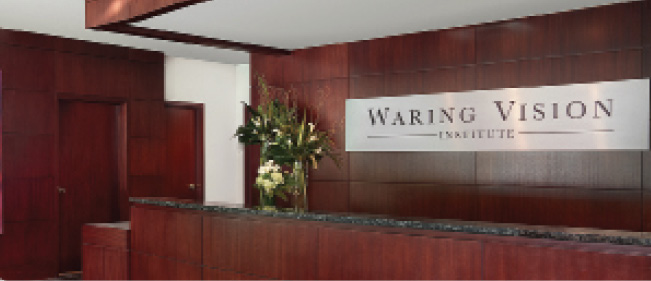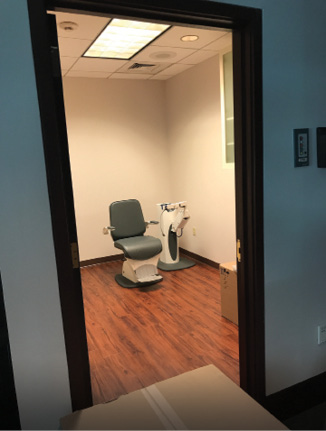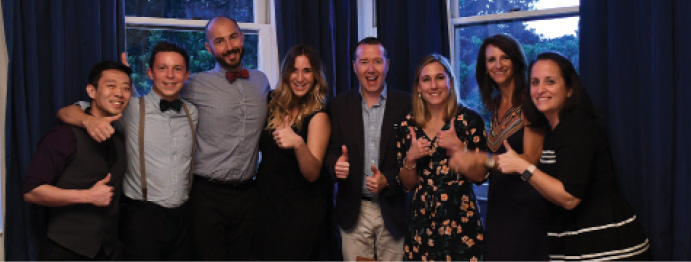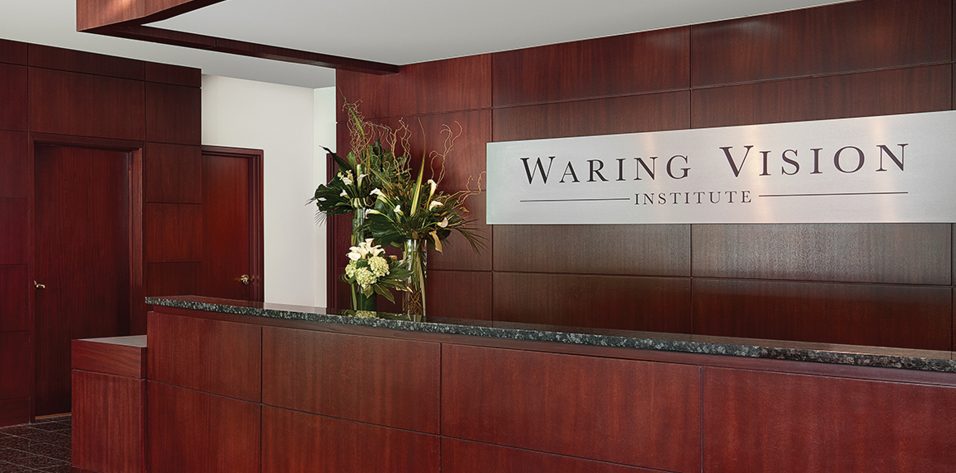
My late father, George O. Waring III, MD, FACS, FRCOphth, was the consummate ophthalmic academician. He was a mentor to me, and, as such, I became academically interested and inclined. We had dreamed of starting a practice together, and we made a go of it in 2008. Unfortunately, the economic crash closed in on us, and we put on our big boy pants and decided it was not the right time, so we moved on.
Fortunately, I had wonderful academic opportunities in my early career, with strong leadership and mentorship from those around me. Furthermore, I had the opportunity to run an academic division with my wife, Karolinne Maia Rocha, MD, PhD. I served as an associate professor of ophthalmology and as director of refractive surgery in academia before transitioning to private practice.


Figure 1. Before (top) and after (bottom) pictures of the entryway to the Waring Vision Institute.
My father, up until his last days, had always encouraged me to pursue private practice. He and I were aware of the sacrifices involved in pursuing an academic career, both personal and professional. His passing in 2015 catalyzed my desire to pursue private practice and carry out our dream. The Waring Vision Institute (Figures 1–3) was founded in his honor.


Figure 2. Signage for the reception counter arrives at the Waring Vision Institute (top); the finished design of the reception counter (bottom).
OVERCOMING FEAR OF TRANSITION
All too often, we think: “There is no way I can do that.” (Whatever that may be.) This is an attitude that holds back too many of us from pursuing our dreams. I was certainly no exception, but, thanks to my amazing friends and mentors who encouraged me to follow a dream, the dream became a reality.

Figure 3. Building out examination lanes at the Waring Vision Institute.
The 3 months leading up to opening the new center and the 3 months after were challenging. However, establishing a private practice has turned out to be fun, rewarding, and much more doable than I made it out to be. Of course, having support at home—with a newborn at the time—was absolutely crucial, and I could not have done it without the support, love, and encouragement of Karolinne.
COUNSEL AND MENTORSHIP
Some of the most important insights for a successful transition from academia to private practice come from investing in consultants and reaching out to trusted friends and mentors, both those who have recently opened a practice themselves and those who are established in a practice that aligns with your vision. Following are a few pearls that have served me well in my own transition.
No. 1: Work toward a positive transition. One has a choice to make a positive transition a priority, even when faced with challenges. The goal is to transition in a mutually supportive and positive manner. This goal serves as the foundation of the transition. Personal relationships are priceless, and they are worth more than the dollars that might be saved in a squabble.
No. 2: Start small. At the end of the day, running a business is a profit/loss calculation. By keeping overhead down on your initial investments, you will become profitable more quickly. Just as important, you will stress less. Staff, real estate, and equipment account for the bulk of a practice’s overhead. Closely monitor your initial investments. Cross-train your staff to wear multiple hats so that each can cross-cover in the event one is not able to make it to work.
No. 3: You are only as good as your team. Invest in your team, and surround yourself with the best people possible (Figure 4). If you have a sense that you have hired a poor fit, an underperformer, or someone who undermines morale, move on your instincts promptly. Not doing so will lead to diminishing returns, and, just as in any relationship, will become more difficult when prolonged. Likewise, encourage and invest in your top performers—which should ideally be everyone in your practice.

Figure 4. Dr. Waring (fourth from right) and colleagues celebrate the 1-year anniversary of the practice.
No. 4: Be patient. As with all good things, it takes time to develop your team, your systems, your brand, and your patient base. There are no substitutes for time, hard work, and patience.
No. 5: Just do it. The desire to start a practice comes from within—no different from the desire to go to medical school or to become an ophthalmologist. If you have an innate feeling that you should start a practice, just do it. It is easy to create obstacles that keep you from taking that step, but, ultimately, you are the only one holding you back. (And, by the way, starting a practice is much easier than going to medical school or getting into ophthalmology.)
HAVE A VISION, CREATE YOUR NICHE
Although we all practice refractive cataract and corneal surgery, we are each different in our daily practice. Your mission and core values may seem obvious to you, but it is important to formalize them in a statement. Doing so helps you to keep your team focused and centered. We review our own mission and values statement at the onset of every monthly meeting. Play to your strengths and to your core competencies, and create a brand around them.
Founding a private practice has been one of the most rewarding aspects of my career to date, if not the most rewarding. My father would always say: “Chance favors those in motion.” I am sure you would all agree that, in general, the greater the risk, the greater the reward. This is certainly true in founding a private practice, whether transitioning from academia or from an existing group practice. Once you set your mind to it, follow the steps outlined here: Minimize risks, call on your trusted peers and consultants, and surround yourself with the very best people.
I would like to take this opportunity to thank those who encouraged and assisted me in this journey. You know who you are.




